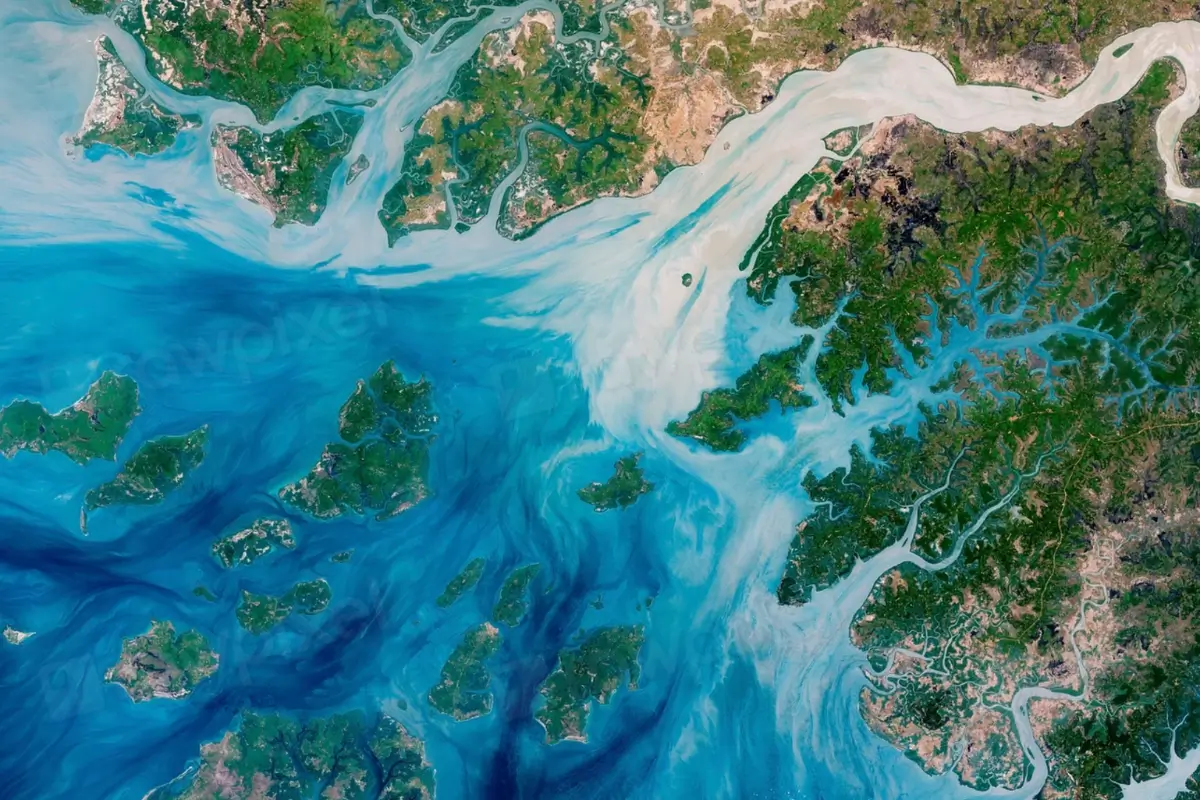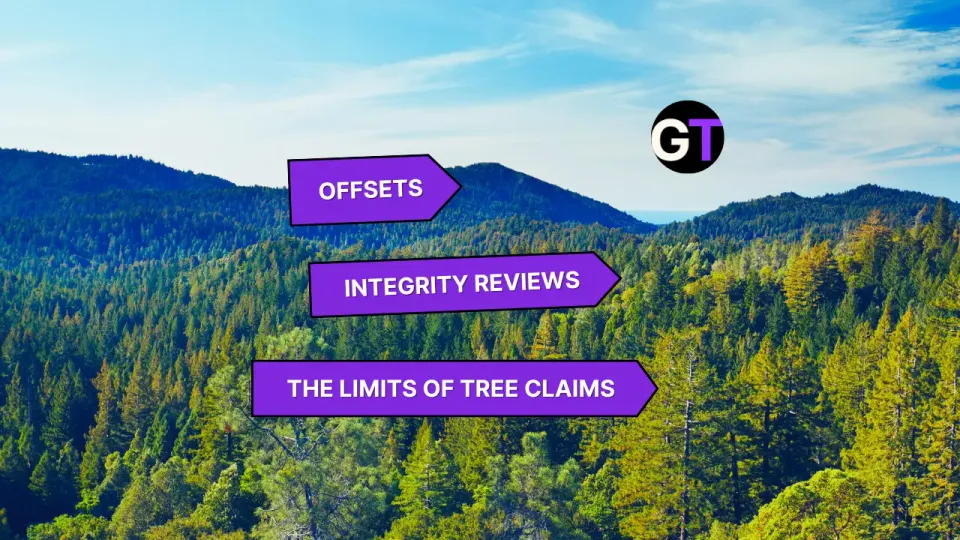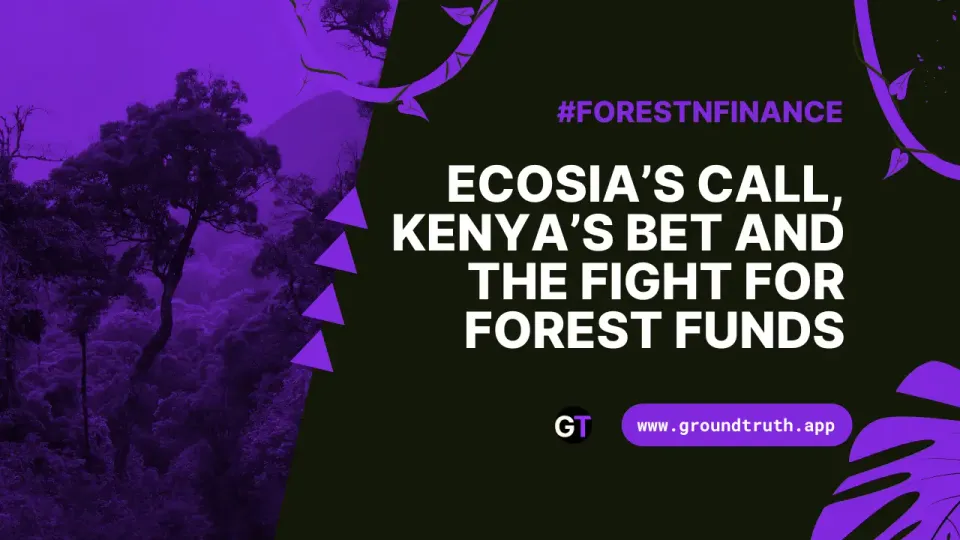Restoring Guinea-Bissau's Mangroves: A Holistic Approach 🌿
He says that many conventional restoration projects fail because they are driven by incentive-based targets, planting a certain amount of land or number of seedlings.

This article by Ruth Kamnizter was originally published in Mongabay.
- Though small, Guinea-Bissau has sizable amounts of mangroves, which cover 9% of this West African country.
- Farmers clear patches of mangroves to grow rice, but climate change and socio-economic shifts mean that many hectares of former rice fields lie abandoned, and could be restored.
- Wetlands International is using an approach called Community-based Ecological Mangrove Restoration (CBEMR) to regenerate abandoned rice fields in and around Cacheu and Cantanhez national parks; 2,600 hectares have been restored to date.
- Community involvement is a cornerstone of the approach, and the project also supports income generation and educational activities.
Mangrove forests still line most of Guinea-Bissau’s fringing shoreline along West Africa’s Atlantic coast, a protective green halo along the many bays and estuaries. Uniquely evolved for the interface between land and sea, mangroves are a nursery for fish, shelter low-lying communities, store carbon, and more.
Communities also cultivate rice in brackish soils of the mangrove swamps, using a method unique to West Africa.
In the past few decades, environmental and socio-economic changes mean that many of these rice fields have been abandoned. Some may be reclaimed by the tides, but many are so altered they instead lie barren and cannot regenerate on their own.
Since 2015 Wetlands International has been working with communities in and around Cacheu and Cantanhez national parks to regenerate these abandoned rice fields, using an innovative approach called Community-based Ecological Mangrove Restoration (CBEMR). It differs from conventional restoration techniques in that it focuses on removing barriers to natural regeneration, instead of mass planting. That includes correcting imbalances in the hydrology, as well as tackling the socio-economic drivers behind mangrove loss.

Rich biodiversity razed for agriculture
Cacheu River Mangroves Natural Park in northern Guinea Bissau is home to the largest mangrove forest in West Africa. Manatees (Trichechus senegalensis) and critically endangered Atlantic humpback dolphins (Sousa teuszii) swim in the estuary, while hippopotamus (Hippopotamus amphibius) lumber through the swamps. There are nearly 250 types of birds, and the mangroves are a spawning ground for numerous fish, rays and sharks. Cantanhez National Park, to the south, also protects vital biodiversity.
Communities in and around both parks — and up and down the coast — rely on the mangroves for food, firewood, protection from the sea and more. They also have a special way of growing rice within the mangrove swamps, honed over generations.
A patch of mangroves is cleared, then a dike is built to stop the incoming tide and the plot divided up with earthen bunds to catch rainwater. It takes expert knowledge to control salinity and retain soil fertility, and maintaining the dikes is hard work. This type of rice cultivation is only practiced in West Africa, and is most common in Guinea Bissau.
In recent years, life in these mangrove villages is changing. A shorter but more intense rainy seasonalong with sea level rise (due to climate change) is making it harder for farmers to manage their rice fields. The soils become too saline (and acidic) to support rice more quickly than previously, shortening the cycle in which the plot must be abandoned and a new one cleared.
At the same time, young people are moving to cities so there are fewer hands for farming. A boom in cashew prices is leading farmers to switch focus from rice to growing cashew in the upland forests, a crop which is less labor intensive and more lucrative.
The net result is hectares of abandoned rice fields. Some might regenerate on their own. But others remain walled off from the sea by dikes, and the land heavily degraded.
Conventional mangrove restoration projects often plant nursery-reared seedlings over large areas. But if the ecological conditions aren’t right, or the wrong species are planted, those seedlings won’t stick. Studies show that many projects fail in the long term; in some, less than 20% of planted seedlingssurvive.
“What we observed [in the region] was that a lot of organizations were doing large scale, single species planting, and we’ve learned over the years that actually that’s not the best way,” says Pieter van Eijk, head of coasts and deltas at Wetlands International. “When we came in saying, ‘why don’t you approach it differently, let’s breach through those dikes, let’s see if nature can do this on its own,’ I think people were a bit skeptical, because it was not the standard approach.”
To allay those doubts, they started with some small-scale pilots, carried out in conjunction with communities, so that people could make up their own minds.
In some areas people used tools like locally crafted shovels with elongated blades to cut through the earthen dikes, so that water could flow more naturally. Once the dikes were breached, the tide helped wash away the rest of the earthen walls, flush out the salts, and recalibrate the soil chemistry. In some places they also had to more substantially reconstruct channels.
Within a few months, things started to turn around. Avicennia germinans — a colonizing species of mangrove trees — floated in with the tide and took root, soon forming a protective mat. “You could just see these seedlings come in very fast,” says van Eijk. “We were quite amazed.”
For comparison, the team used conventional planting techniques in other areas, with mixed results. Not only was the ecological approach more successful, the team calculated it would be much cheaper to implement at scale because it didn’t require rearing seedlings in greenhouses.
The initial pilot project ran from 2015 to 2018, and restored 200 hectares. In the current phase of the project, which began in 2021 and will run until 2025, nearly 2,400 hectares has been restored so far. They have also assisted other groups in restoring a further 563 hectares.
Communities the ‘central element’ in restoration
Initially it wasn’t easy to convince people to participate in the project and turn over their abandoned fields for restoration, says Abdoulaye Ndiaye, program manager with Wetlands International. After all, rice is their livelihood. But once they saw the benefits — protection from sea storms, more abundant fishing closer to the village — they became enthusiastic and eager to participate, he says.
Ndiaye calls communities the “central element” in restoration. He says they’ve been involved at every step, from the physical work of breaking up the dikes to the ongoing monitoring of salinity, species and other parameters. He’s confident that they now have the tools to continue the work on their own.
But this restoration approach isn’t just about bringing back mangroves. It’s also about meeting the community’s needs.
“On one hand, of course we’d like to respect that traditional way [of rice cultivation]. But from an environmental perspective, it’s extremely harmful, because the CO2 emissions of this practice are incredible,” says van Eijk.
On average, mangroves store 394 metric tons of CO2 per hectare, much of which is held in the below-ground root system. When mangroves are cleared and the soil is drained, that carbon all goes up into the atmosphere, contributing to climate change.
Over time, population pressure meant that rice cultivation was progressively pushed into more marginal areas, van Eijk says, hastening the cycle of abandonment and clearing. Now there’s a chance to dial things back. The project is working with farmers and stakeholders on ways to increase yields and the longevity of the plots on the landward side of the mangroves, where the land is more suitable.
Rice cultivation isn’t the only pressure on mangroves, or the wider environment. While the move to cashew nut farming is lowering pressure on the mangroves, it’s driving deforestation in the upland forests. Data from monitoring platform Global Forest Watch show the rate of primary forest loss quadrupled in Guinea-Bissau between 2012 and 2013 and has largely remained at that level.
“What we are trying to do with the communities and also with the government is to really take a landscape approach to try and manage these pressures as best as we can, build an awareness about the needs for protecting certain areas, restoring where we can, but then also respecting the need of the communities to have a proper income,” van Eijk says. “That’s a challenging process.”
With this in mind, the project runs education sessions and supports savings and loans associations, home gardens, an alternative method of cultivating oysters, and beekeeping. Mangroves are also being cut down for firewood; Ndiaye calls the beehives “mangrove guardians,” because no-one will cut down a tree when there’s an active hive.
In all, 10,000 people (including extended families) have been engaged in the project, according to Wetlands International’s reporting.

A broad and inclusive approach
According to Global Mangrove Watch, 12,700 hectares of degraded land once blanketed in mangroves are suitable for restoration in Guinea Bissau.
In 2020, the Platform on Mangrove Landscapes of Guinea-Bissau (PLANTA) was created, bringing together more than 20 government agencies, international NGOs and national organizations to promote and track restoration efforts.
In September, the Guinea Bissau National Chapter of the Global Mangrove Alliance (GMA) officially launched, as part of the GMA’s global effort aiming to restore half of recently lost mangroves, and double the area under protection by 2030.
Last year, the GMA and the Blue Carbon Initiative, along with partners including Wetlands International, released guidelines on the best practices for mangrove restoration, which closely align with CBEMR.
Dominic Wodehouse is executive director of the Mangrove Action Project, a non-profit organization that runs training and education programs, and was one of the first to promote this approach.
He says that many conventional restoration projects fail because they are driven by incentive-based targets, planting a certain amount of land or number of seedlings. That can lead to mangroves being planted in mudflats or other unsuitable areas. Or, in the rush to plant, the reasons for the initial decline aren’t properly mitigated.
“So we try to get people away from those area targets [which] just set up averse incentives and try and get them into thinking much more about the sort of appropriate science,” Wodehouse says.
That means understanding what’s preventing natural recolonization, which often comes down to the hydrology; mangroves like a constant wash of salt and freshwater. Fixing the problem might mean anything from digging out a few channels to substantially reconstructing the landscape, and planting seedlings if needed.
It’s also about looking at social and economic factors, as well as land tenure, to resolve underlying drivers of loss. Communities need to be front and center, and given tools to manage the area in the long term, he says.
“Once you’ve done the restoration and everyone goes, okay, that was fun, thank you guys … you’re then expecting the community to look after this thing for the next 30, 60 years. They need to understand how to do that, because it’s difficult. It needs good, strong, consistent leadership and rules and zoning … and it’s not an area that I think is getting enough attention,” Wodehouse says.
Citations:
Mendes, O., & Fragoso, M. (2024). Recent changes in climate extremes in Guinea-Bissau. African Geographical Review, 1-19.
Primavera, J. H., & Esteban, J. M. A. (2008). A review of mangrove rehabilitation in the Philippines: successes, failures and future prospects. Wetlands Ecology and Management, 16, 345-358.
Friess, D. A., Gatt, Y. M., Ahmad, R., Brown, B. M., Sidik, F., & Wodehouse, D. (2022). Achieving ambitious mangrove restoration targets will need a transdisciplinary and evidence-informed approach. One Earth, 5(5), 456-460.
Temudo, M. P., Cabral, A. I., & Reis, P. (2022). The Sea Swallowed Our Houses and Rice Fields: The Vulnerability to Climate Change of Coastal People in Guinea-Bissau, West Africa. Human Ecology, 50(5), 835-850.
Garcia del Toro, E. M., & Más-López, M. I. (2019). Changes in land cover in Cacheu River Mangroves Natural Park, Guinea-Bissau: The need for a more sustainable management. Sustainability, 11(22), 6247.
License
Kamnitzer, Ruth. "How a holistic approach aims to heal mangroves in Guinea-Bissau." Mongabay, 27 November 2024. Republished under a Creative Commons Attribution-NoDerivatives 4.0 International (CC BY-ND 4.0) license.




